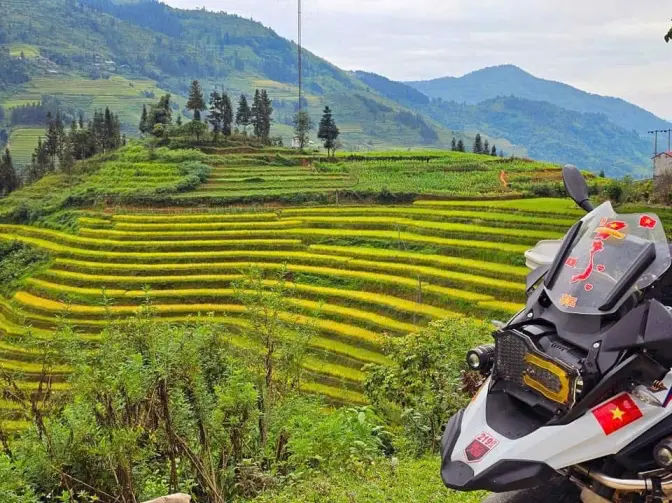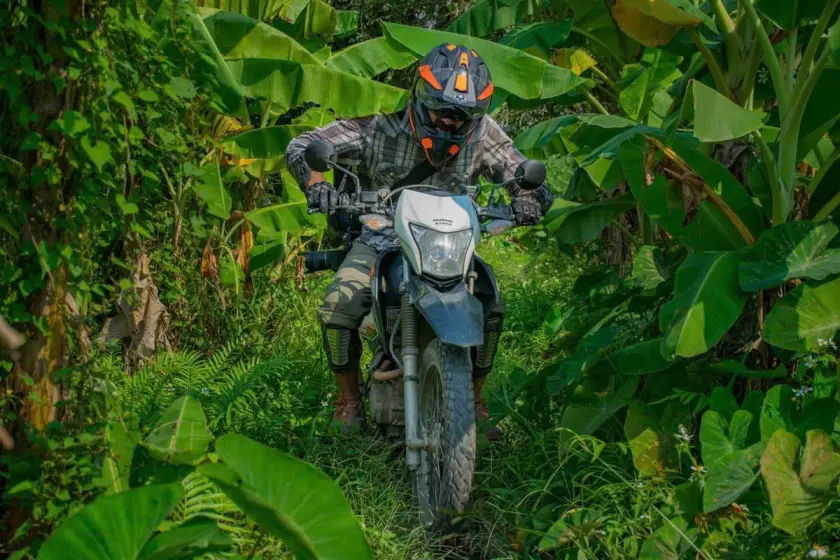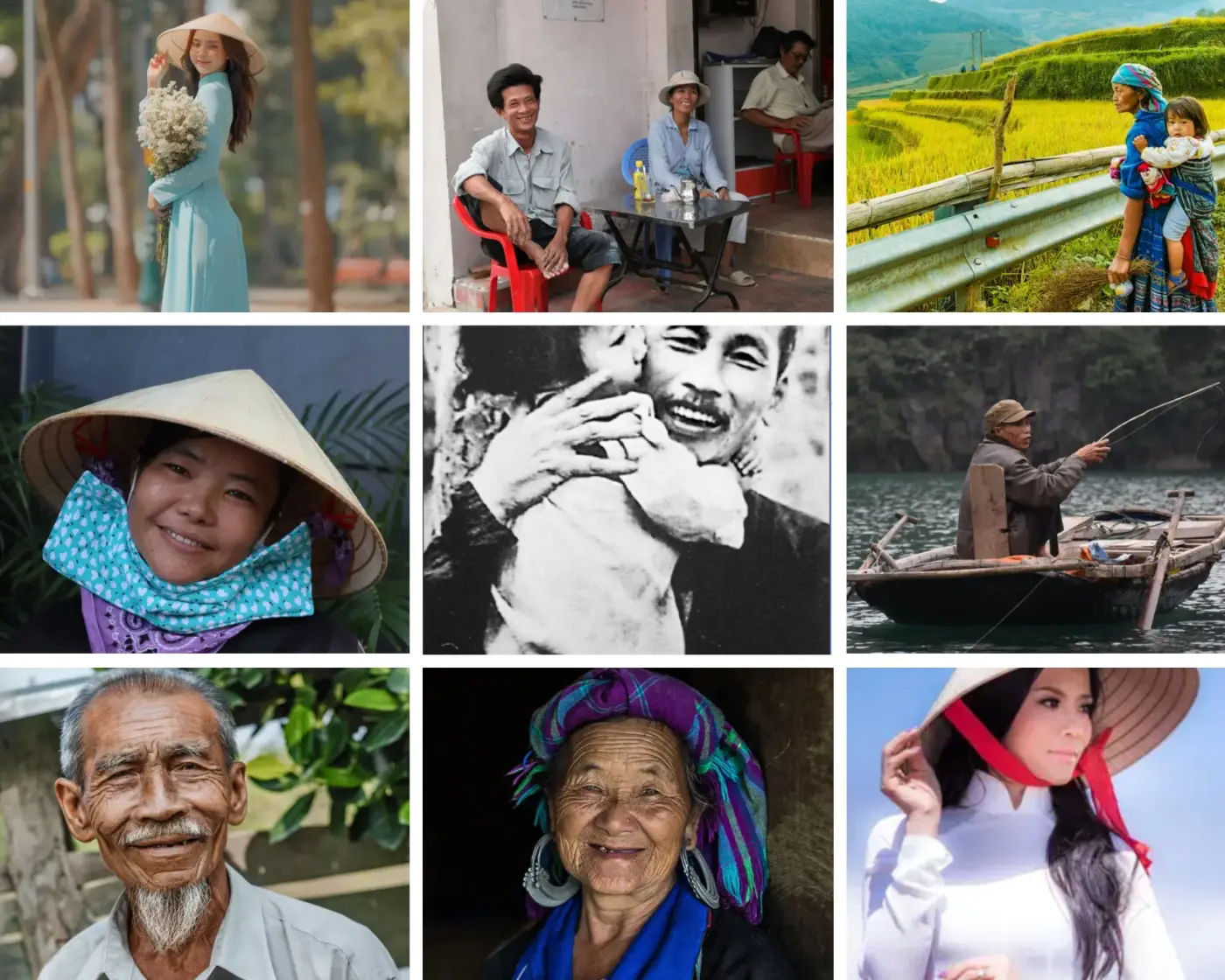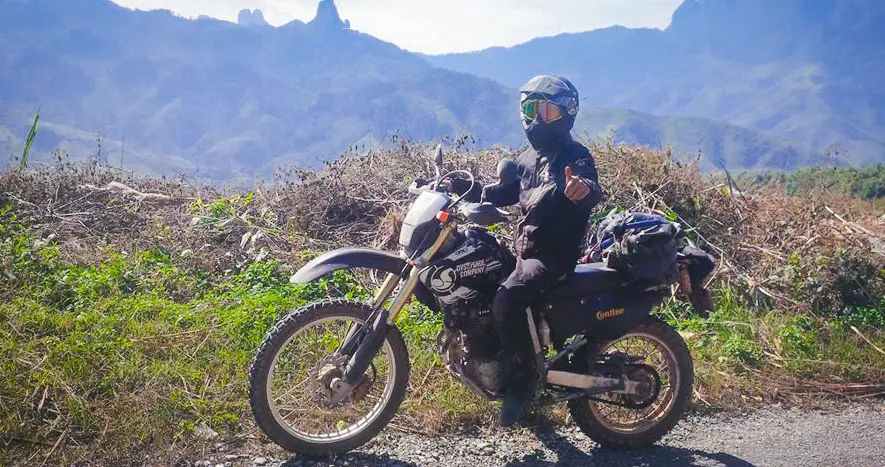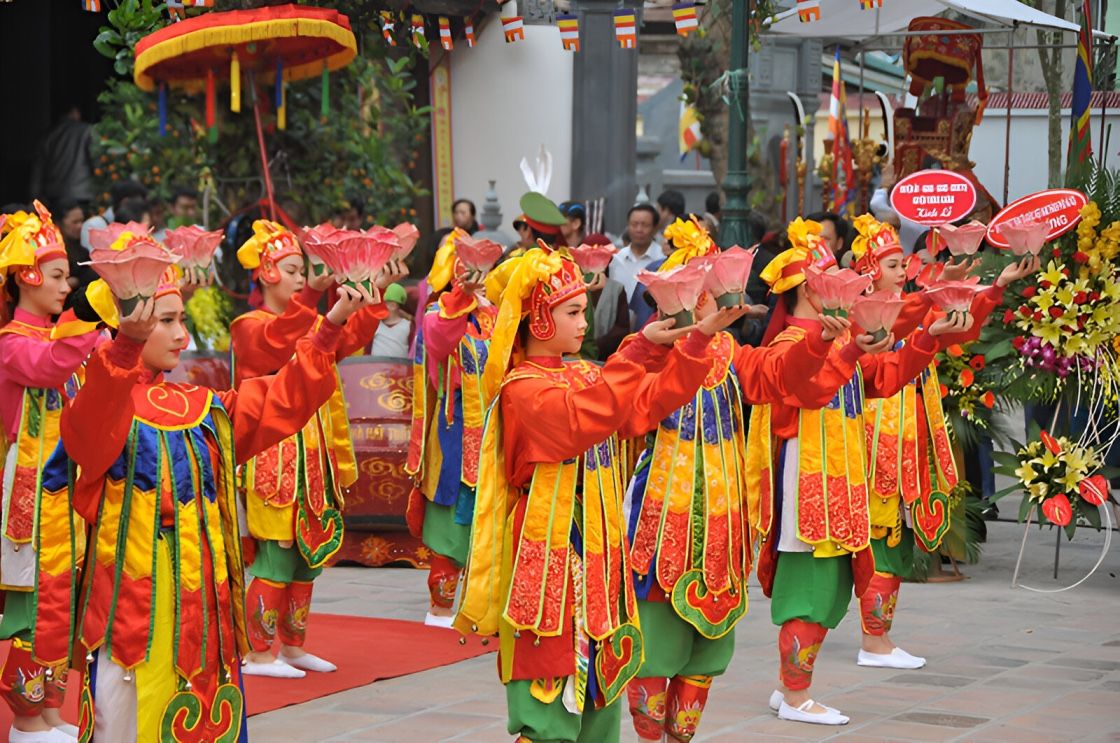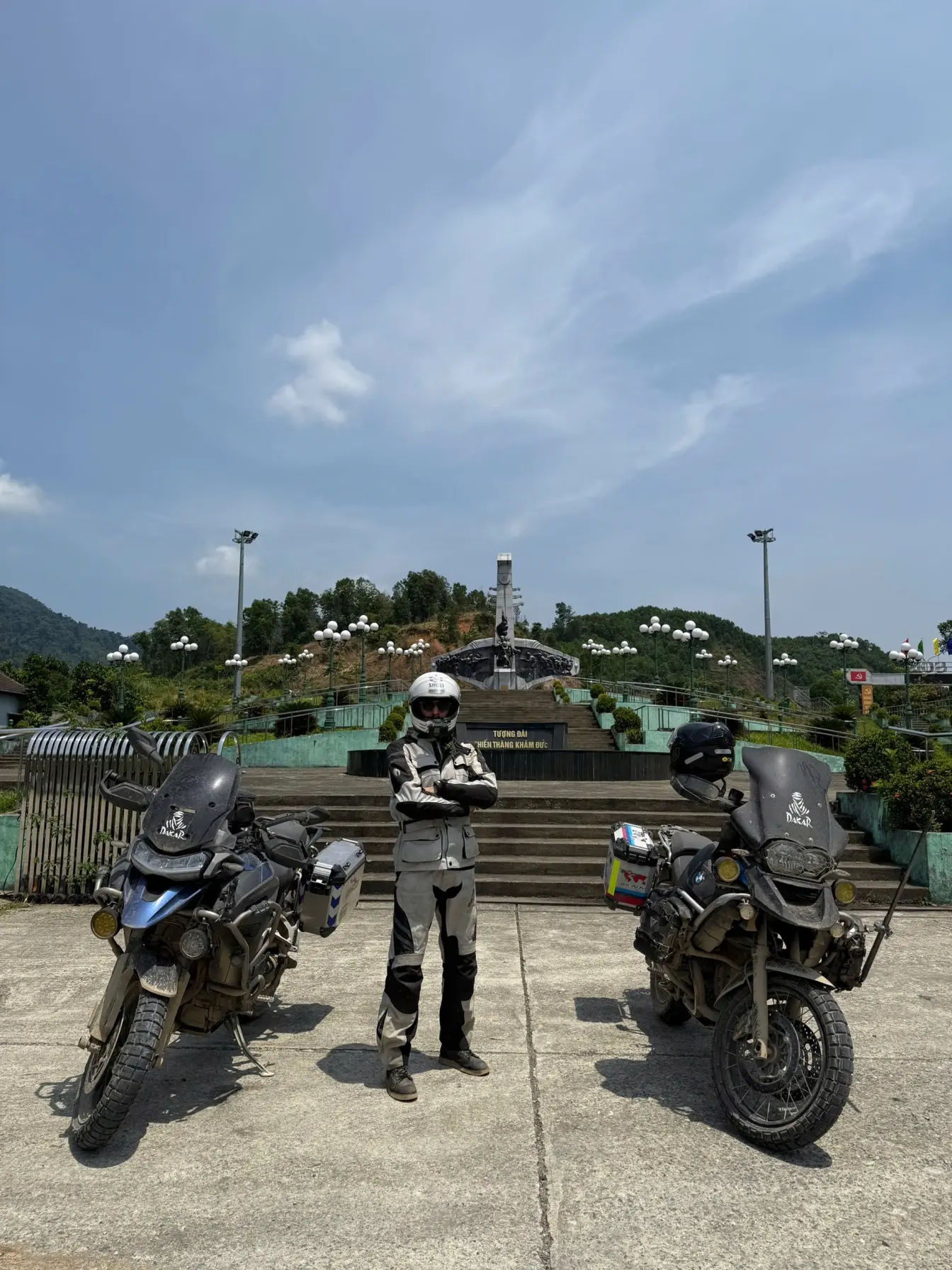
This post is about the diversity of the Vietnam’s 54 ethnic groups of people, the country is home to one of the most diverse cultural landscapes in Southeast Asia. Out of the country’s population of around 97 million, over eight million people belong to 53 officially recognized ethnic minority groups, each with its own language, traditions, and history. This makes Vietnam a true melting pot of ethnic diversity unmatched in the region.
The largest group, the Kinh (or Viet) people, make up about 88% of the population. The remaining 12% are spread across the mountainous northern regions, the Truong Son mountain range, and the Central Highlands. On Vietnamese motorbike tours, we have personally met most of these 54 ethnic groups—each encounter revealing a new layer of Vietnam’s vibrant cultural identity.
The Viet (Kinh) People
The Viet or Kinh people are the dominant ethnic group in Vietnam, primarily inhabiting the lowlands and urban centers. Their origins trace back 4,000–5,000 years, when the ancestors of the Viet migrated from southern China and gradually settled in the Red River Delta. Over time, they absorbed smaller communities, forming the cultural foundation of modern Vietnam.
According to legend, the Vietnamese trace their roots to the union of the Dragon King of the South and the fairy princess Âu Cơ. She bore one hundred sons — half followed their father to the lowlands and became the Kinh people, while the others remained in the mountains, becoming the ancestors of today’s ethnic minorities. This mythical story still beautifully explains the connection between the lowlanders and the highlanders of Vietnam.
- Check out Vietnamese people
Vietnam’s Mountain Communities
Roughly 10% of Vietnam’s population belongs to ethnic minority groups, often referred to as the Highlanders or Montagnards (a French term meaning “mountain people”). They inhabit remote, rugged landscapes from the far north near the Chinese and Lao borders to the Central Highlands.
Some of these communities have lived here for thousands of years, while others migrated from neighboring regions more recently. Altitude often defines their territories—later arrivals typically settled at higher elevations. Despite diverse languages and customs, these groups share agricultural lifestyles, distinctive stilt houses, and deep spiritual ties to nature.
Daily Life, Customs, and Traditions
Highland communities are typically rural and agricultural. Many practice swidden (slash-and-burn) farming, cultivating “dry rice” on mountain slopes. Villages feature stilt houses that protect against snakes, floods, and wild animals, while also providing space for livestock beneath. Communal traditions such as drinking rice wine and protective rituals for newborns are still widespread.
Some groups are semi-nomadic, moving their villages when soil fertility declines. While this lifestyle is ecologically challenging, it reflects deep-rooted traditions of harmony with the land. However, deforestation and government resettlement programs now encourage more sustainable practices, including paddy rice cultivation and the growth of cash crops like tea, coffee, and cinnamon.
Western Influence and Modern Change
In recent decades, modernization and national integration have reshaped the lives of many ethnic minorities. Electricity, modern education, and healthcare have brought undeniable benefits—but they also accelerate cultural assimilation. In remote northern villages, traditional clothing and rituals still survive, though mostly among women and elders. Men often wear Vietnamese or Western-style clothes, and younger generations are increasingly drawn to lowland cities.
While progress brings opportunity, it also risks eroding unique languages, crafts, and oral histories that have defined these groups for centuries.
Booming Tourism and Its Impact
Tourism is a double-edged sword for Vietnam’s ethnic communities. On one hand, it generates income and global recognition of their heritage. On the other, it introduces cultural pressure and commercialization. In places like Sapa and Bac Ha, children once shy around visitors now approach tourists for candy or money. Responsible tourism—buying handmade products directly from artisans and respecting local customs—is essential to preserving the authenticity of these communities.
Ethnic People’s Classification in Vietnam
| Ethnic Language Family | Representative Ethnic Groups |
|---|---|
| Mon–Khmer Family | Ba Na, Brau, Bru Van Kieu, Cho Ro, Co, Co Ho, Co Tu, Gie Trieng, Hre, Khang, Khmer, Kho Mu, Ma, Mang, M’nong, O Du, Ro Mam, Ta Oi, Xinh Mun, Xo Dang, Xtieng |
| Tay–Thai Family | Bo Y, Giay, Lao, Lu, Nung, San Chay, Tay, Thai |
| Tibeto–Burman Family | Cong, Ha Nhi, La Hu, Lo Lo, Phu La, Si La |
| Malayo–Polynesian Family | Cham, Chu Ru, E De, Gia Rai, Ra Glai |
| Viet–Muong Family | Chut, Kinh, Muong, Tho |
| Kadai Family | Co, Lao, La Chi, La Ha, Pu Peo |
| Mong–Dao Family | Dao, H’Mong, Pa Then |
| Han Family | Hoa, Ngai, San Diu |
Language, Identity, and Connection
Each ethnic group speaks its own language or dialect, forming part of Vietnam’s remarkable linguistic diversity. The Vietnamese government officially recognizes 54 ethnic groups, preserving their languages, festivals, and traditional crafts through cultural policies, museums, and education initiatives.
Despite modernization and migration, many communities continue to celebrate their own new year festivals, spiritual ceremonies, and agricultural rituals—keeping their heritage alive for future generations.
- Check out Languages spoken in Vietnam
The 54 Ethnic groups peoples of Vietnam
Vietnam officially recognizes 54 ethnic groups, making it one of the most ethnically diverse countries in Southeast Asia. While the Kinh (Viet) people form the majority and shape the nation’s dominant culture, the remaining 53 minority groups bring extraordinary cultural richness through their distinct languages, customs, and traditions.
From the Tay, Thai, and H’Mong in the misty northern mountains to the Ede, Cham, and Gia Rai in the Central Highlands, each group contributes unique architecture, clothing, cuisine, and beliefs to Vietnam’s national identity.
These communities reflect centuries of migration, adaptation, and coexistence, offering travelers a deeper understanding of Vietnam’s living heritage. Exploring the 54 ethnic groups of Vietnam isn’t just about history—it’s about discovering the country’s cultural soul across its villages, highlands, and valleys.
1. Ba Na ethnic group
The Ba Na ethnic group mainly inhabits the Central Highlands provinces of Kon Tum, Gia Lai, and parts of Bình Định. They traditionally live in stilt houses clustered around a communal house called a rong, which serves as the spiritual and social heart of the village. The Ba Na practice wet-rice cultivation, weaving, and woodcraft, while maintaining vibrant gong music and epic storytelling that form part of UNESCO-recognized Central Highlands culture.
2. Bo Y ethnic group
The Bo Y live mostly in Hà Giang and Lào Cai Provinces, close to the Chinese border. They practice terrace farming and raise livestock on high mountain slopes. Known for their skill in weaving and indigo dyeing, the Bo Y build houses with half-stilt, half-ground design adapted to the rugged terrain. Their New Year ceremonies blend animism and ancestor worship, reflecting their deep connection to nature and seasonal cycles.
3. Brau ethnic group
One of Vietnam’s smallest ethnic minorities, the Brau live mainly in Đăk Mế Village of Ngọc Hồi District, Kon Tum Province. They rely on slash-and-burn farming, fishing, and hunting for sustenance. The Brau are noted for unique body adornments such as ear stretching and teeth filing, as well as the gong buốt drum dancing tradition that symbolizes community unity during festivals.
4. Bru – Vân Kiều ethnic group
The Bru – Vân Kiều inhabit the mountainous border areas of Quảng Trị, Quảng Bình, and Thừa Thiên Huế. They cultivate hill rice and cassava, raise buffalo and pigs, and practice animist rituals centered on forest and water spirits. Their traditional longhouses and rhythmic cha chấp dance express a lifestyle tied to the forest and seasonal changes of the Annamite Range.
5. Cham ethnic group
Descendants of the ancient Champa Kingdom, the Cham mainly live in Ninh Thuận, Bình Thuận, and An Giang. They are well known for their brick tower temples, mat weaving, and distinct matrilineal society. Today, the Cham follow either Islam or Hinduism, preserving age-old festivals like Kate and Ramuwan that honor deities, ancestors, and the Cham kings.
6. Cho Ro ethnic group
The Cho Ro reside in Đồng Nai and Bà Rịa – Vũng Tàu Provinces, near the southeastern forests. They practice wet-rice and upland farming, combined with forest product gathering. Their social life revolves around harvest rituals and community drum dances performed in communal houses. Cho Ro women are skilled in weaving bamboo and rattan household items for trade.
7. Chu Ru ethnic group
The Chu Ru mainly live in Lâm Đồng Province and share linguistic roots with the Chăm. Traditionally matrilineal, they engage in rice cultivation, livestock herding, and weaving. Their homes feature unique carved wooden decorations, and rituals such as buffalo sacrifice mark key life events. The Chu Ru’s oral songs and gong ensembles remain central to their cultural identity.
8. Chứt ethnic group
The Chứt are one of Vietnam’s smallest and most reclusive ethnic communities, residing in the limestone mountains of Quảng Bình and Hà Tĩnh. Historically semi-nomadic hunter-gatherers, they now practice small-scale farming and animal husbandry. The Chứt retain a rich system of folk tales, forest beliefs, and unique methods of foraging that reflect deep knowledge of the Phong Nha–Kẻ Bàng region.
9. Cơ ethnic group
Also known as the Kor, the Cơ inhabit Trà My and Bắc Trà My Districts of Quảng Nam Province. They grow rice, maize, and cassava on terraced hillsides and are known for bamboo weaving and blacksmithing. Cơ villages typically feature a communal house where ceremonies and youth gatherings take place, highlighting their collective traditions and respect for village elders.
10. Cống ethnic group
The Cống, or Cong, live in remote areas of Mường Tè District, Lai Châu Province, near the border with Laos. They practice slash-and-burn cultivation, fishing, and traditional handloom weaving. Cống communities are recognized for their colorful clothing, silver jewelry, and festive Kin Pang Then celebration, which combines ancestor worship with dance and music to mark the new agricultural season.
11. Co Ho Ethnic Group
The Co Ho ethnic group primarily lives in the Central Highlands provinces of Lam Dong and Dak Lak. Traditionally known as skilled farmers, they cultivate rice, coffee, and maize on terraced fields surrounded by lush forests. The Co Ho are famous for their gong music, communal longhouses, and matriarchal family traditions. Their colorful festivals, such as the buffalo sacrifice ceremony, reflect deep spiritual connections to nature and ancestral spirits, making them one of Vietnam’s most culturally distinctive highland communities.
12. Co Lao Ethnic Group
The Co Lao ethnic group resides in the northern mountain provinces of Ha Giang and Tuyen Quang near the Chinese border. They mainly practice upland farming, growing corn, rice, and soybeans. Their stilt houses, built on steep hillsides, reflect adaptation to rugged terrain. The Co Lao have rich oral traditions and unique wedding customs that emphasize family unity and respect for ancestors. Their colorful clothing and distinctive headscarves distinguish them from neighboring groups.
13. Co Tu Ethnic Group
The Co Tu people inhabit the mountainous areas of Quang Nam and Thua Thien–Hue provinces in central Vietnam. They are skilled farmers, planting dry rice, cassava, and forest crops. The Co Tu are famous for their communal houses, called “Guol,” decorated with wooden carvings representing mythical creatures. Traditional gongs, dances, and storytelling remain central to their community life. Their strong sense of solidarity and rich folklore make them a cultural treasure of central Vietnam.
14. Dao Ethnic Group
The Dao ethnic group, also known as the Yao, lives mainly in the northern highlands of Ha Giang, Lao Cai, and Yen Bai. They are well-known for their indigo-dyed clothing embroidered with bright patterns and silver jewelry. The Dao practice both wet and dry rice cultivation and are skilled herbalists, using forest plants for traditional medicine. Their spiritual life includes Taoist-influenced rituals and ancestor worship, reflecting a deep balance between nature, spirituality, and community.
15. E De Ethnic Group
The E De people, part of the Austronesian family, live mainly in Dak Lak and Phu Yen provinces in Vietnam’s Central Highlands. They practice matrilineal traditions where family lineage is traced through women. The E De are known for longhouses made of wood and bamboo, epic folk tales, and gong ensembles recognized by UNESCO. Farming, coffee cultivation, and weaving are key to their livelihood, while their oral epics like “Dam San” preserve centuries-old cultural heritage.
16. Giay Ethnic Group
The Giay ethnic group, also called Nhang or Dang, primarily resides in the northern provinces of Lao Cai and Ha Giang, near the Chinese border. They live in stilt or earth houses in fertile valleys and grow wet rice, corn, and vegetables. The Giay wear simple yet elegant traditional attire and celebrate the “Long Tong” (Field Work) Festival to honor the rice god. Known for hospitality and communal harmony, the Giay have closely integrated with the Viet and Tay cultures while preserving their identity.
17. Gia Rai Ethnic Group
The Gia Rai ethnic group is native to the Central Highlands, particularly in Gia Lai and Kon Tum provinces. They live in villages surrounded by bamboo fences and are known for their wooden stilt houses with curved roofs. The Gia Rai practice slash-and-burn farming and raise livestock, while maintaining unique funeral rituals and wooden statue carvings in graveyards. Their gong music, matrilineal customs, and rhythmic dances express a strong connection to ancestors and nature.
18. Gie Trieng Ethnic Group
The Gie Trieng people live along the Vietnam–Laos border in Kon Tum and Quang Nam provinces. They practice dry-rice cultivation, hunting, and gathering forest products. Their villages are built around large communal houses where festivals, dances, and gong performances take place. The Gie Trieng maintain ancient animist beliefs, worshipping natural spirits for protection and prosperity. Their traditional costumes, woven from hand-dyed fabrics, and their solidarity-based village structure reflect a close-knit mountain lifestyle.
19. Ha Nhi Ethnic Group
The Ha Nhi ethnic group lives mainly in remote mountainous areas of Lai Chau and Lao Cai provinces, close to China. They cultivate terraced rice fields and raise livestock on steep slopes. The Ha Nhi are famous for their earthen houses with thick walls that keep them warm in winter. Women wear bright, intricately embroidered costumes and silver ornaments. The Ha Nhi celebrate the June New Year Festival, offering thanks for good harvests and family well-being.
20. Hoa Ethnic Group
The Hoa ethnic group, or ethnic Chinese, is concentrated in major cities like Ho Chi Minh City, Hai Phong, and Can Tho, as well as border provinces. They have played a major role in Vietnam’s commerce and trade for centuries. The Hoa maintain rich cultural traditions, including festivals such as the Lunar New Year and the Mid-Autumn Festival. Their contributions to business, cuisine, and community organization have significantly influenced Vietnam’s economic and cultural landscape.
21. Hre Ethnic Group
The Hre ethnic group lives mainly in the mountainous regions of Quang Ngai, Binh Dinh, and Kon Tum provinces in central Vietnam. They are primarily rice farmers who practice both wet and dry cultivation, along with animal husbandry and weaving. The Hre are known for their long stilt houses and folk songs called “Ka choi,” often accompanied by gongs. Their rich oral traditions, festivals, and colorful attire reflect a strong connection to nature and community life.
22. Khang Ethnic Group
The Khang ethnic group resides in the northwestern provinces of Dien Bien and Son La, near the Da River. They are mainly farmers who grow upland rice, corn, and cassava, while also engaging in fishing and forest gathering. Khang villages are typically located along rivers and streams, with houses built on stilts. Their culture emphasizes community unity and traditional dances performed during harvest festivals, showing deep gratitude to the earth and ancestors.
23. Khmer Ethnic Group
The Khmer ethnic group is concentrated in the Mekong Delta provinces of Tra Vinh, Soc Trang, and Kien Giang. Descendants of the ancient Khmer Empire, they practice
24. Kho Mu Ethnic Group
The Kho Mu ethnic group, also known as Xa Cau, inhabits the mountainous provinces of Dien Bien, Nghe An, and Son La. They mainly practice shifting cultivation, growing rice, maize, and cassava. Kho Mu houses are built on stilts and arranged along hillsides. The group has a rich spiritual life centered on nature worship and ancestral veneration. Their folk songs and bronze drums play an important role in social gatherings and ceremonial occasions.
25. Kinh (Viet) Ethnic Group
The Kinh, or Viet, are the largest ethnic group in Vietnam, making up about 88% of the population. They live primarily in lowland areas, coastal plains, and urban centers from north to south. The Kinh have a long history of wet rice cultivation and have developed a sophisticated culture that forms the foundation of modern Vietnamese society. Their traditions include ancestor worship, Lunar New Year celebrations, and Confucian values emphasizing family, education, and community harmony.
26. La Chi Ethnic Group
The La Chi ethnic group mainly inhabits Ha Giang Province in northern Vietnam. They live in mountainous villages surrounded by terraced rice fields and forests. The La Chi are known for their advanced terraced farming techniques and indigo-dyed clothing decorated with silver jewelry. Their social structure values communal solidarity and ancestor worship. Festivals such as the “New Rice Celebration” honor the harvest and reinforce harmony between people and nature.
27. La Ha Ethnic Group
The La Ha ethnic group resides in Son La and Lai Chau provinces in northwestern Vietnam. They traditionally practice slash-and-burn agriculture, cultivating rice, corn, and sweet potatoes. La Ha houses are typically built on stilts with thatched roofs. Their culture features lively folk songs, love duets, and colorful festivals dedicated to the rice goddess. The La Ha maintain close-knit communities where village elders play a respected role in local decision-making.
28. La Hu Ethnic Group
The La Hu ethnic group lives mainly in Lai Chau Province near the Vietnamese–Chinese border. They are a small community known for hunting, gathering, and subsistence farming. La Hu villages are often located on remote hillsides, with houses built from bamboo and wood. Their traditional clothing features bright colors and silver ornaments. The La Hu have a strong oral tradition, with folk tales and songs passed down through generations celebrating courage and harmony with nature.
29. Lao Ethnic Group
The Lao ethnic group is found mainly in the northwestern provinces of Dien Bien and Son La, close to the border with Laos. They are skilled rice farmers who cultivate fertile valleys using wet rice techniques. Lao villages are built along rivers and feature stilt houses shaded by tall trees. Their culture shares similarities with Lao people across the border, including traditional dance, weaving, and the Bunpimay New Year Festival, which emphasizes purification and good fortune.
30. Lo Lo Ethnic Group
The Lo Lo ethnic group, also called the Lu Lu or Mùn Di, primarily lives in the northern provinces of Ha Giang and Cao Bang. They are known for their striking traditional costumes decorated with colorful geometric embroidery. The Lo Lo practice terraced rice cultivation and maintain a strong belief in ancestor worship. Their unique bronze drum ceremonies and lively festivals highlight their artistic creativity and deep spiritual connection to the mountains.
31. Lu Ethnic Group
The Lu ethnic group lives mainly in Lai Chau Province in northwestern Vietnam, especially in Tam Duong and Sin Ho districts. They are skilled rice farmers who cultivate terraced fields along mountain valleys. Lu women are easily recognized by their indigo skirts and distinctive black headscarves. Their villages are built near streams, reflecting harmony with nature. Traditional Lu festivals include the “Kin Pang Then” ceremony, where locals express gratitude to the heavens for good harvests and peace, preserving their ancient Tai-Kadai cultural roots.
32. Ma Ethnic Group
The Ma ethnic group primarily resides in Lam Dong and Dak Nong provinces in Vietnam’s Central Highlands. Traditionally, the Ma practice shifting cultivation and animal husbandry while also weaving and wood carving. Their stilt houses are built close to rivers and forests, symbolizing balance with nature. The Ma have a matrilineal society, where women play a central role in inheritance and family decisions. Their lively gong festivals and spiritual rituals to honor ancestors showcase a deep respect for community and the natural world.
33. Mang Ethnic Group
The Mang ethnic group lives in Lai Chau and Dien Bien provinces in northwestern Vietnam. Small in population, they practice upland rice and corn cultivation on terraced slopes. The Mang are known for their vibrant clothing featuring embroidered geometric patterns and for maintaining animist traditions centered on forest and ancestor worship. Their folk songs and storytelling preserve centuries-old wisdom. Despite their modest numbers, the Mang people contribute unique cultural color to Vietnam’s ethnic mosaic through music, craft, and oral heritage.
34. Mong (H’Mong) Ethnic Group
The Mong, or H’Mong, ethnic group is one of Vietnam’s largest highland minorities, living across Lao Cai, Ha Giang, and Son La provinces. They are expert terrace farmers cultivating maize and rice on steep mountain slopes. Mong women are known for their bright embroidered costumes and batik-dyed fabrics. The Mong New Year (Tet Mong) is celebrated with traditional flute music and community dances. With their strong independence, vibrant handicrafts, and unique language, the Mong people form an essential part of northern Vietnam’s cultural identity.
35. M’nong Ethnic Group
The M’nong ethnic group inhabits Dak Nong, Dak Lak, and Lam Dong provinces in Vietnam’s Central Highlands. Traditionally elephant tamers and skilled farmers, they practice wet rice cultivation and forest gathering. The M’nong live in longhouses and maintain oral epics known as “Ot Ndrong,” which recount tales of heroes and gods. Their festivals involve gong music, dancing, and buffalo sacrifices. Deeply spiritual, the M’nong maintain animist beliefs that celebrate harmony between humans, nature, and the spirit world.
36. Muong Ethnic Group
The Muong ethnic group is concentrated in Hoa Binh, Thanh Hoa, and Phu Tho provinces. Closely related to the Kinh people, the Muong are expert wet rice farmers who live in stilt houses nestled in valleys. They are known for their rich folk culture, including “Mo Muong” chants and bronze drum traditions. Muong women wear long skirts with intricate embroidered belts and silver jewelry. Their New Rice Festival and ancestor worship rituals reflect deep agricultural wisdom and spiritual connection to their land.
37. Ngai Ethnic Group
The Ngai ethnic group primarily lives in Quang Ninh and Hai Phong provinces along Vietnam’s northeastern coast. Historically fishermen and farmers, they also engage in salt production and small-scale trade. The Ngai speak a dialect related to Cantonese and preserve traditional Chinese-style festivals such as the Lunar New Year and Mid-Autumn Festival. Their temples and ancestor halls remain central to village life. Over centuries, the Ngai have maintained their linguistic and cultural distinctiveness while integrating harmoniously into Vietnamese society.
38. Nung Ethnic Group
The Nung ethnic group mainly resides in Cao Bang, Lang Son, and Bac Kan provinces near Vietnam’s northern border. They are skilled farmers cultivating rice terraces and tea plantations. The Nung are recognized for their indigo clothing, traditional stilt houses, and “Then” spiritual singing accompanied by string instruments. Their festivals, such as the Long Tong (field ceremony), celebrate harvests and prosperity. The Nung’s peaceful villages, rich music, and community spirit make them one of Vietnam’s most culturally enduring ethnic minorities.
39. O Du Ethnic Group
The O Du ethnic group, one of Vietnam’s smallest minorities, lives mainly in Tuong Duong District of Nghe An Province. Traditionally, the O Du practiced shifting cultivation and fishing along the Nam Non River. They now live alongside Thai and Kho Mu communities, sharing customs and language influences. The O Du are known for their folk songs and community dances that express gratitude to nature and ancestors. Despite their small population, efforts continue to preserve their language and cultural heritage.
40. Pa Then Ethnic Group
The Pa Then ethnic group resides in Ha Giang and Tuyen Quang provinces in northern Vietnam. They are expert farmers cultivating rice, corn, and soybeans in terraced valleys. Pa Then women wear striking red and black embroidered dresses with intricate beadwork. Their most famous tradition is the Fire Dancing Festival, held after harvest season, symbolizing courage and harmony with nature. The Pa Then’s colorful culture, spiritual practices, and resilience reflect the beauty and strength of Vietnam’s northern mountain peoples.
41. Phu La Ethnic Group
The Phu La ethnic group primarily lives in Lao Cai and Lai Chau provinces in northern Vietnam. They are skilled in terraced rice farming and animal husbandry, often settling in mountain valleys near streams. Phu La women are easily recognized by their colorful headscarves and indigo-dyed clothing adorned with handmade silver jewelry. The Phu La language belongs to the Tibeto-Burman group, and their folk songs and spring festivals celebrate fertility and nature. Their peaceful mountain lifestyle reflects deep harmony between people and the environment.
42. Pu Peo Ethnic Group
The Pu Peo ethnic group resides in Ha Giang Province, mainly in the rugged Dong Van Plateau region. They are one of Vietnam’s smallest ethnic minorities, known for their unique wooden stilt houses and traditional polytheistic beliefs. The Pu Peo cultivate maize, rice, and beans on rocky slopes, adapting ingeniously to the harsh karst landscape. Their colorful costumes feature handwoven fabrics with geometric patterns. Annual rituals to honor deities of the sky and earth reveal the Pu Peo’s strong spiritual connection to nature and community.
43. Ra Glai Ethnic Group
The Ra Glai ethnic group lives in the south-central provinces of Ninh Thuan and Khanh Hoa. They traditionally practice slash-and-burn farming, cultivating rice, maize, and cassava in forested valleys. The Ra Glai are known for their wooden stilt houses, gong music, and vibrant oral epics passed down through generations. Their matrilineal society places strong importance on women’s roles in family and inheritance. Rich in spiritual traditions, the Ra Glai celebrate seasonal festivals that honor mountain spirits and express gratitude to the earth.
44. Ro Mam Ethnic Group
The Ro Mam ethnic group lives in the remote Le Village area of Kon Tum Province in Vietnam’s Central Highlands. Among the smallest ethnic communities in the country, the Ro Mam sustain their lives through farming, hunting, and forest gathering. They build stilt houses and maintain close-knit communal bonds. Their traditions include unique gong music, ceremonial dances, and animist rituals to honor ancestors and nature spirits. Despite modernization, the Ro Mam continue to preserve their distinct cultural identity through oral storytelling and traditional crafts.
45. San Chay Ethnic Group
The San Chay ethnic group mainly lives in the midland and northern provinces such as Thai Nguyen, Tuyen Quang, and Quang Ninh. They cultivate wet rice, fish, and weave. San Chay villages feature stilt houses surrounded by terraced fields. During festivals and weddings, they perform “Soong Co” folk songs that express love and community spirit. The San Chay wear dark indigo clothing and practice ancestral worship that reflects their harmony with the land and natural cycles of life.
46. San Diu Ethnic Group
The San Diu ethnic group lives in provinces such as Thai Nguyen, Vinh Phuc, and Quang Ninh. Their ancestors migrated from southern China centuries ago, and they have since integrated deeply into Vietnamese society. San Diu people practice wet rice farming and are known for their strong musical traditions. The “Soong Co” duet songs, performed during festivals, showcase poetic storytelling and courtship. Their culture blends Chinese and Vietnamese influences, visible in their language, clothing, and traditional celebrations like the Lunar New Year.
47. Si La Ethnic Group
The Si La ethnic group, one of Vietnam’s smallest minorities, resides in Lai Chau and Dien Bien provinces near the China border. They live in remote mountain villages and grow corn, rice, and cassava on steep hillsides. Si La women wear unique indigo clothing decorated with rows of silver coins. Their customs include community ceremonies to pray for rain and good harvests. Despite their small population, the Si La maintain rich oral traditions, symbolizing resilience and harmony with the rugged northern highlands of Vietnam.
48. Tay Ethnic Group
The Tay ethnic group ranks as Vietnam’s second-largest minority, living mainly in Cao Bang, Lang Son, and Bac Kan provinces. They expertly cultivate wet rice and build stilt houses near streams and valleys. Tay communities celebrate the Long Tong (field) festival to welcome the farming season and perform colorful “Then” songs accompanied by the traditional “Tinh” lute. Their traditional clothing, distinctive architecture, and strong sense of community reveal an agricultural and cultural heritage that has shaped northern Vietnam for centuries.
49. Ta Oi Ethnic Group
The Ta Oi ethnic group inhabits Thua Thien Hue and Quang Tri provinces, close to the Laos border. They practice both wet rice and shifting cultivation while preserving ancient weaving techniques that produce vibrant brocade fabrics. Ta Oi villages center around communal houses that host gong performances and traditional dances. Their belief system honors forest spirits and ancestors, emphasizing respect for nature. The Ta Oi’s artistry and musical traditions make them one of central Vietnam’s most distinctive highland communities.
50. Thai Ethnic Group
The Thai ethnic group is one of Vietnam’s largest minority communities, mainly living in Son La, Lai Chau, and Dien Bien provinces. They excel in terraced rice farming, build stilt houses, and create intricate brocade weavings. The Thai have a rich cultural heritage expressed through dance, music, and storytelling. Their traditional “Xoe” dance symbolizes unity and happiness, often performed during festivals. The Thai people’s deep agricultural knowledge, hospitality, and strong community bonds make them an integral part of Vietnam’s northern cultural landscape.
51. Tho Ethnic Group
The Tho ethnic group mainly inhabits the northern provinces of Nghe An and Thanh Hoa. They live along river valleys and foothills, cultivating wet rice, corn, and cassava. The Tho people have a close cultural link to the Viet-Muong group, reflected in their similar language and farming lifestyle. Their villages feature traditional stilt houses and host communal festivals that celebrate good harvests. Music, folk tales, and ancestral worship play an important role in daily life, preserving the Tho’s deep connection to Vietnam’s ancient lowland traditions.
52. Xinh Mun Ethnic Group
The Xinh Mun ethnic group lives mainly in the mountainous areas of Son La and Dien Bien provinces. They skillfully combine slash-and-burn and wet rice cultivation while supplementing their livelihood through hunting and gathering. Xinh Mun villagers build stilt houses on hillsides surrounded by lush greenery. Their colorful costumes, adorned with beads and embroidery, showcase artistic craftsmanship. Traditional Xinh Mun festivals involve dancing, singing, and offerings to forest spirits, reflecting their deep respect for nature and harmonious mountain lifestyle.
53. Xo Dang Ethnic Group
The Xo Dang ethnic group, also known as Sedang, resides in Kon Tum and Quang Nam provinces of Vietnam’s Central Highlands. They are primarily upland farmers who grow rice, corn, and cassava through shifting cultivation. Xo Dang villages feature communal “rong” houses—large, beautifully decorated wooden halls that serve as cultural centers. They excel in gong music, weaving, and vibrant traditional ceremonies. Their spiritual beliefs honor forest spirits, ancestors, and natural forces, symbolizing the harmony between people and the highland environment.
54. Xtieng Ethnic Group
The Xtieng ethnic group lives in the southern provinces of Binh Phuoc and Dong Nai near the Cambodian border. They practice a mix of wet rice and slash-and-burn farming and showcase their craftsmanship through bamboo weaving and bronze gong performances. The Xtieng celebrate the New Rice Festival, a major community event giving thanks for good harvests. Their matrilineal society values women’s roles in inheritance and family unity. Despite modernization, the Xtieng continue to preserve their ancient traditions, rituals, and strong communal identity in Vietnam’s southern highlands.
Final Thoughts: Ethnic minorities and indigenous people
Vietnam’s 54 ethnic groups are more than just a community, they represent thousands of years of adaptation, resilience, and coexistence. From the stilt houses of the Thai and Tay to the vibrant textiles of the H’Mong and Dao, each culture adds color and depth to the Vietnamese identity.
As travelers, respecting these communities and supporting responsible tourism helps ensure that their languages, traditions, and craftsmanship continue to thrive in the 21st century. Meeting these groups isn’t just a cultural experience—it’s a profound reminder of how diverse and unified Vietnam truly is.
Based on decades of local experience, historical research, and firsthand encounters across Vietnam’s highlands.
About the author
Hamid is a travel writer and explorer passionate about Vietnam’s diverse cultures and landscapes. He has visited remote villages and mountain regions to meet many of Vietnam’s 54 ethnic groups, sharing authentic stories and insights that reveal the real Vietnam beyond the tourist trail.



